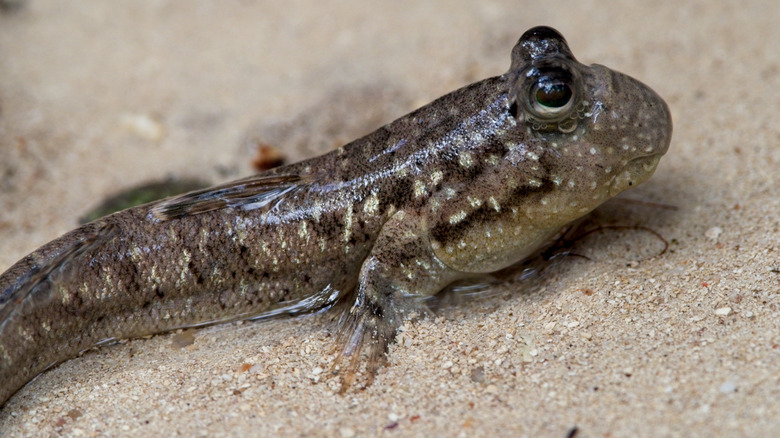The Real Reason You Can't Breathe Underwater
We humans often seem to think that we're the top dogs here on Earth. The fact is, though, many of the wonderful species we share the planet with can soundly beat us at a whole variety of things.
Take holding our breath underwater, for instance. It's a favorite pursuit in swimming pools and bathtubs around the world, but our ability to do so pales in comparison to various species. Per How Stuff Works, the Cuvier's beaked whale is believed to have the most remarkable breath-holding capacity of any endotherm water dweller. On its regular deep dives for prey, this remarkable whale is reported to be able to hold its breath for 138 minutes.
How can human beings compete with that? Well, they can't, really. According to Guinness World Records, Budimir Šobat of Croatia holds the record for "longest time breath held voluntarily (male)," at 24 minutes 37.36 seconds. The freediver attributes his success to long hours spent training.
The question is, why can't we breathe underwater in the first place? It's all thanks to our good friend oxygen, and our lungs' relationship with it.
We don't have gills, for one thing
Firstly, we must consider the major general difference between fish and whales: the latter don't have gills. The implications of this, put simply, are that fish have no need to surface to breathe, while whales must do so. Even though some species can hold their breath for truly heroic periods, they have to surface eventually.
Live Science explains the differences between the two methods of breathing. The gills of a fish filter oxygen from the water while removing unwanted waste in the process. Our lungs, the outlet reports, take in oxygen from the air via the alveolae, where it passes into our lungs. We then remove carbon dioxide with an outward breath.
While the processes of breathing through gills and breathing without are similar, the distinction is a crucial one. Human beings can't breathe underwater, and fish can't use their gills to breathe on land. There are fish that can breathe on the surface, however.
Mudskippers and the like are the exception to the rule
The mudskipper is a fascinating example of a fish that can breathe on the surface. The BBC reports that mudskippers can remain out of the water for over two days at a time, owing to their unique fins and joints that enable them to better direct their movements on the surface. They can also see better outside of the water than in it. Most crucially, their mouths and skin can take in oxygen straight from the air, just like us.
How Stuff Works tackled the tricky topic of why we can't breathe underwater, despite water being composed of oxygen and hydrogen. Essentially, the oxygen in water isn't the right kind. Per the outlet, "the reason we cannot breathe liquid water is because the oxygen used to make the water is bound to two hydrogen atoms, and we cannot breathe the resulting liquid."
The oxygen fish breathe has been dissolved in the water, rather than that which is present in the water itself. Warm-blooded humans (and whales) also need more oxygen than fish, the outlet goes on, and with the difficulty of extracting it from the water, it wouldn't be possible for us to breathe down there.
Put simply, aside from technological advancements and tricky creatures like the mudskipper, it's just another incredible example of how the world's species are adapted to the environments they call home.


